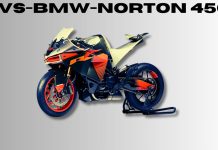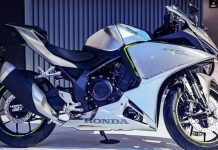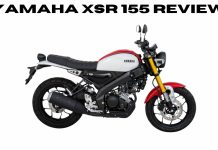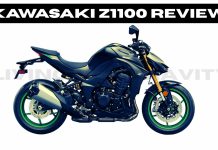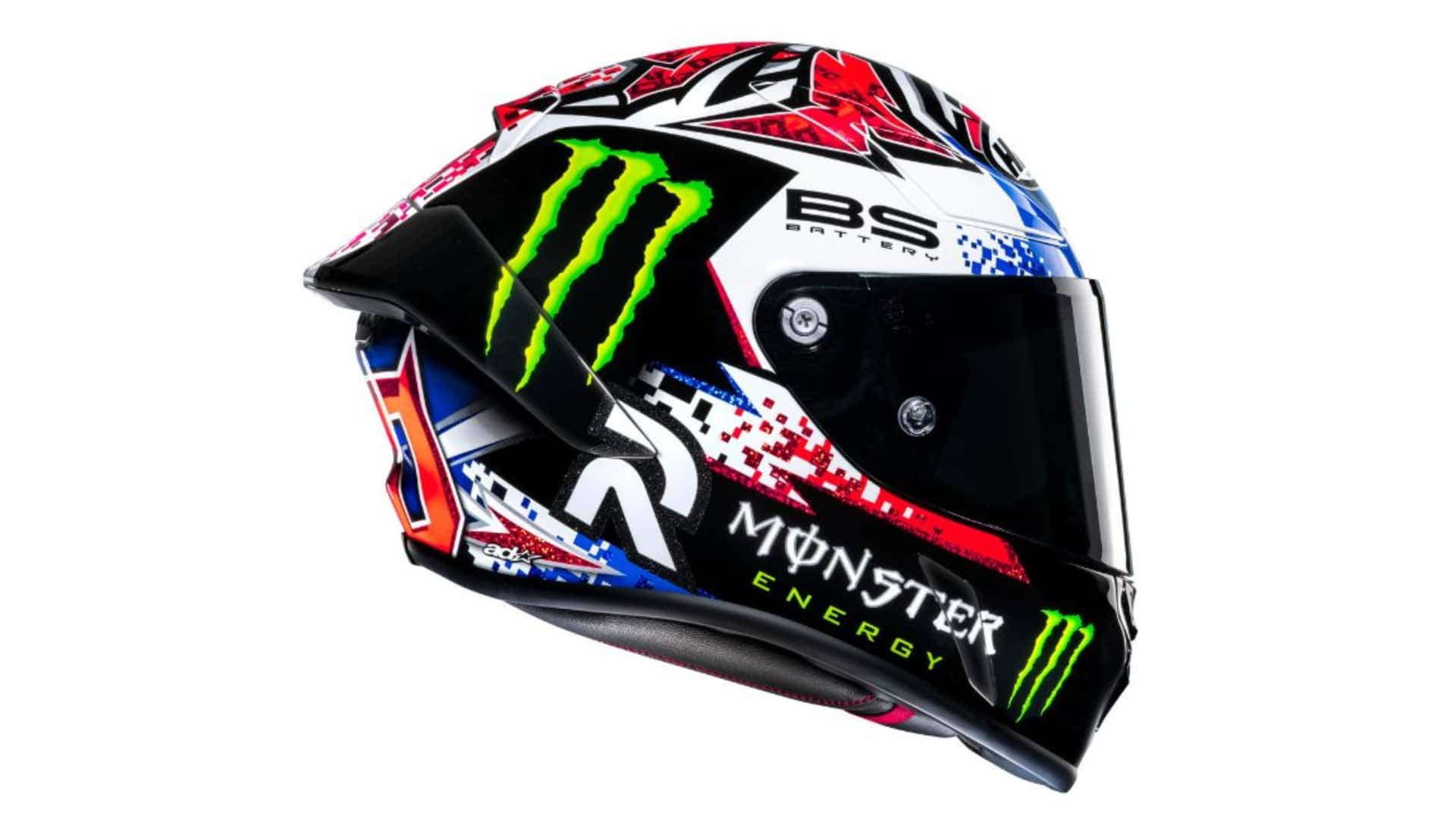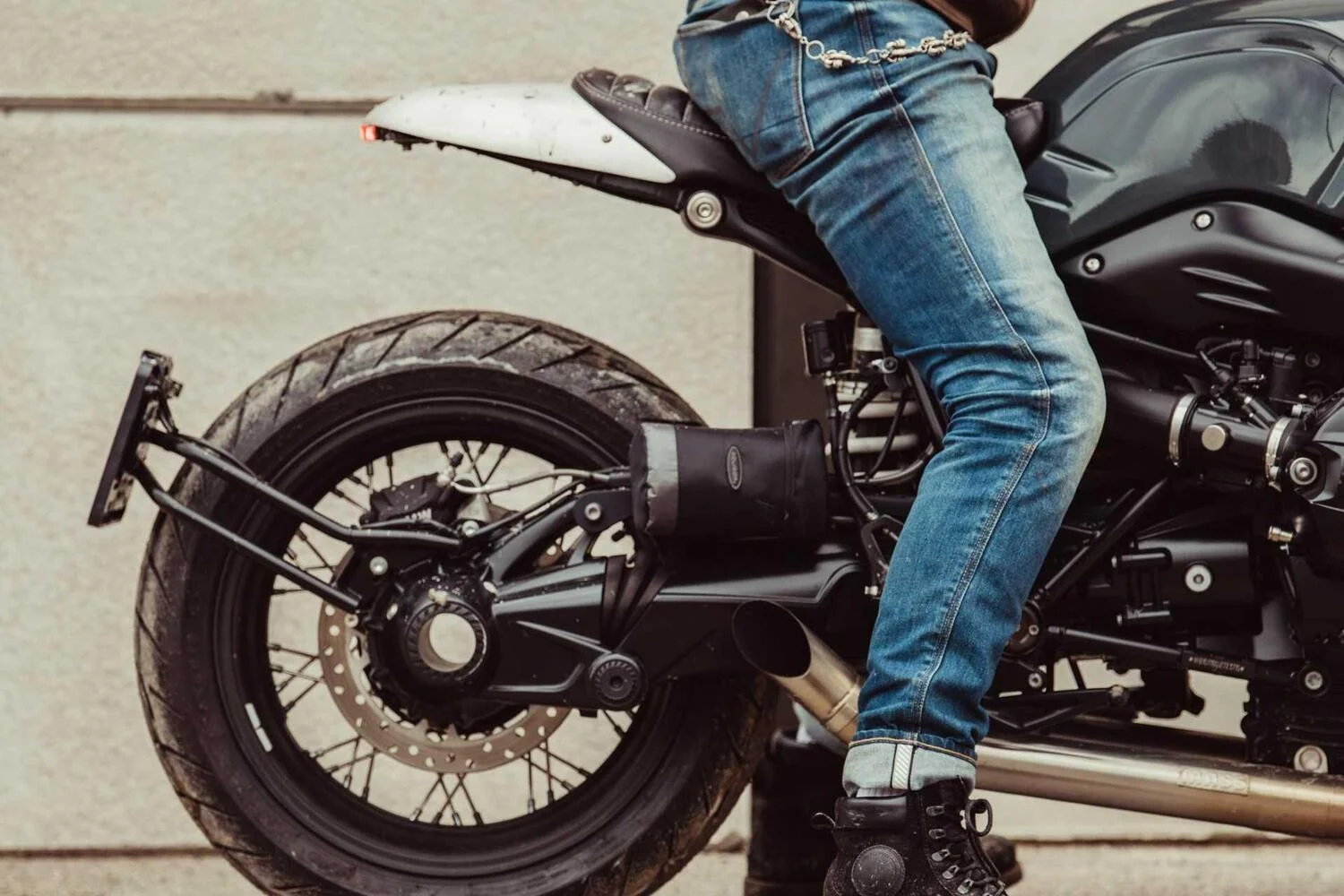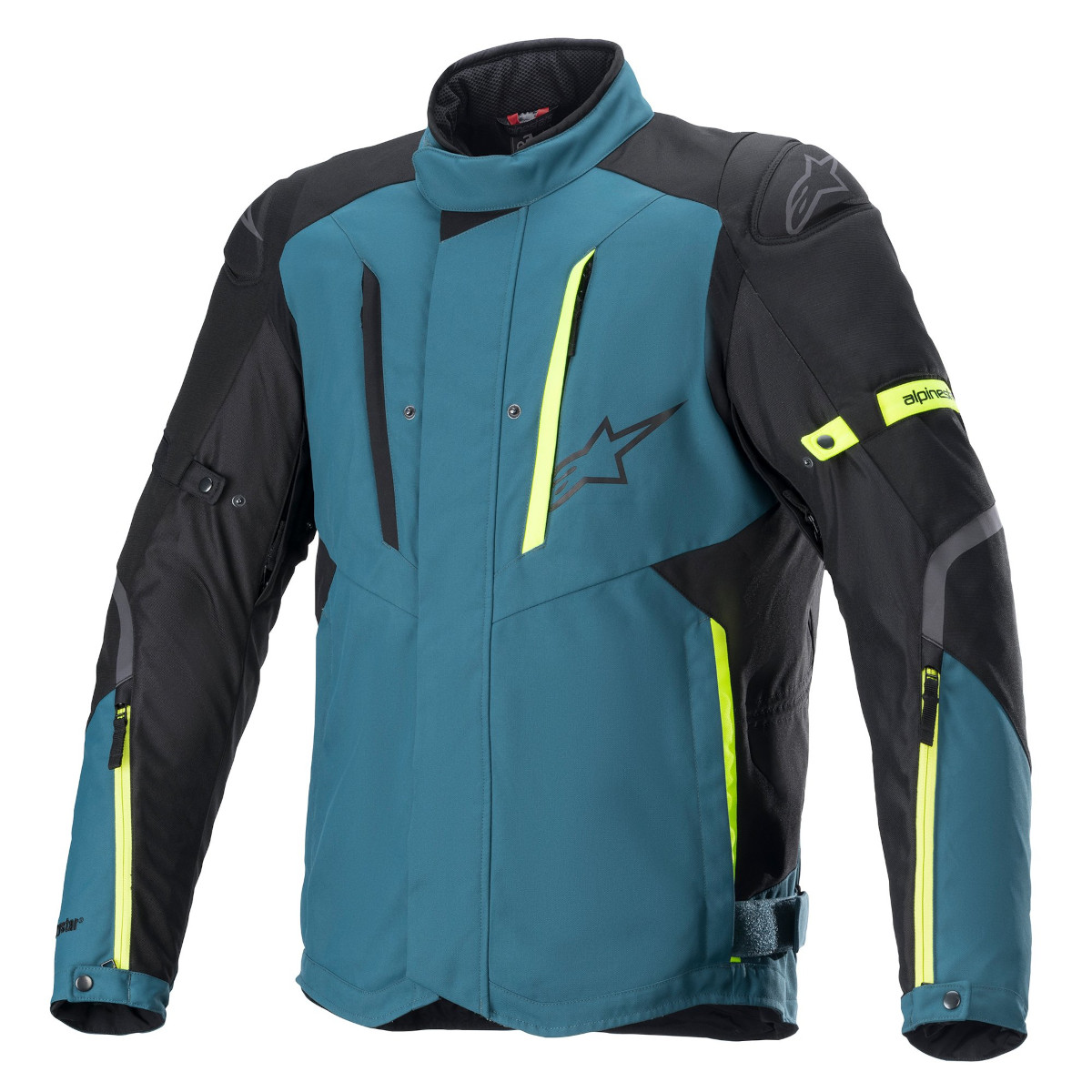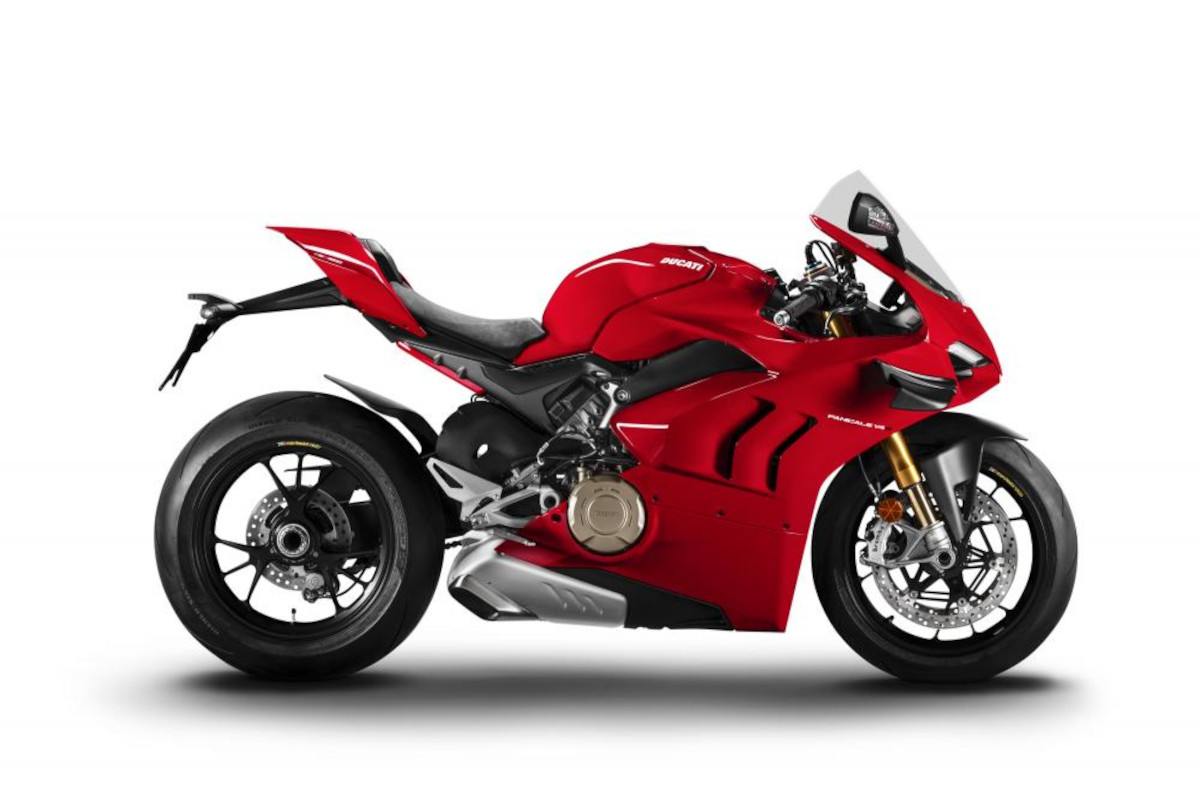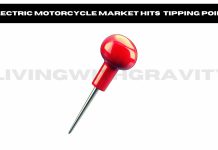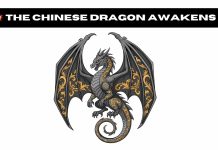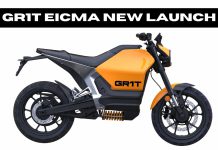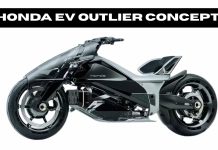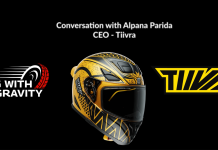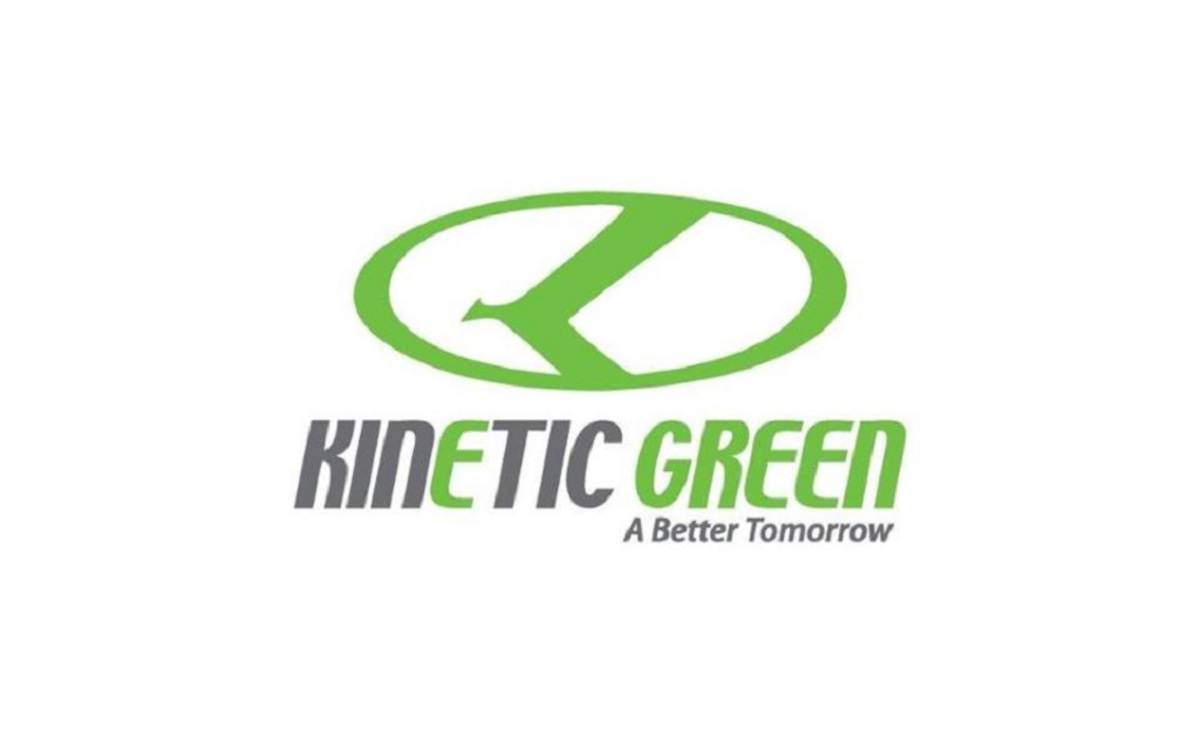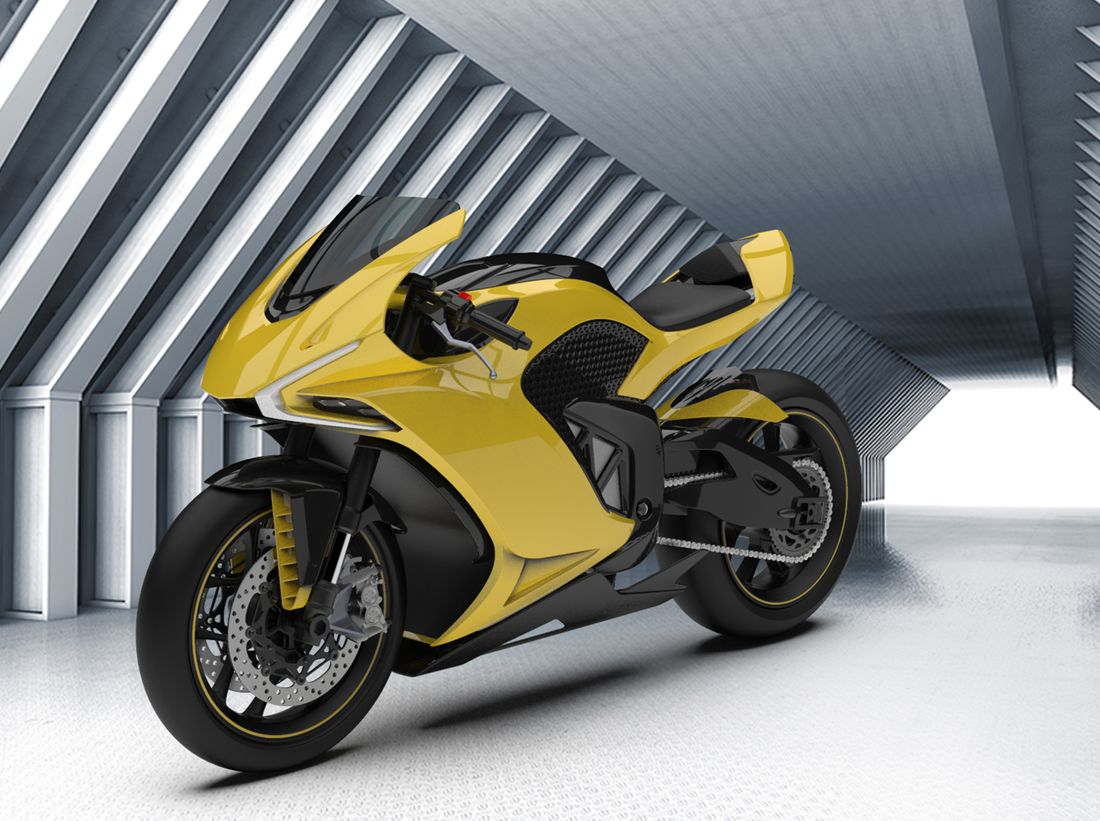The Indian electric two-wheeler (e2W) market is absolutely buzzing, transforming from a niche segment into a full-blown sensation. It is a journey filled with rapid growth, evolving consumer demands, and a few speed bumps along the way. Amidst this electrifying landscape, Kinetic Green is preparing a grand return, poised to redefine urban mobility with a compelling blend of nostalgia and cutting-edge innovation.
1. India’s Electric Two-Wheeler Thrill Ride: A Market Pulse Check
The landscape of personal transportation in India is undergoing a profound transformation, with electric two-wheelers leading the charge. This shift is not merely a trend; it is a powerful wave of adoption driven by economic, environmental, and technological factors. Understanding the dynamics of this vibrant market is crucial for any player looking to make a significant impact.
1.1. The Electrifying Momentum: Growth and Projections
The Indian electric scooter and motorcycle market has truly hit its stride. In 2024, it achieved a remarkable volume of 1.14 million units, a testament to its burgeoning appeal.1 Projections indicate an astonishing climb to 11.59 million units by 2034, fueled by a phenomenal Compound Annual Growth Rate (CAGR) of 26.10% from 2025 to 2034.1 This trajectory paints a picture of a market on a mission, expanding at an exhilarating pace.
Recent sales figures further underscore this robust momentum. June 2025 alone witnessed impressive growth, with total sales reaching 105,283 units, marking a substantial 31.59% year-on-year increase compared to June 2024.2 April 2025 also recorded stellar performance, with 91,791 e-two-wheelers sold, representing a 40% year-on-year growth and setting a new benchmark for retail sales in the first month of a fiscal year.3 The market’s financial valuation mirrors this expansion, having been valued at USD 1.3 billion in 2024 and projected to swell to USD 3.0 billion by 2033, with a CAGR of 9.60% from 2025 to 2033.4 Even with reduced government incentives, sales for the first five months of 2025 exceeded 547,000 units, indicating continued strong momentum.5
The market’s sustained growth, even as government incentives like the FAME 2 scheme have seen their per-kWh subsidy halved under the new EMPS 2024 plan, suggests a fascinating development.5 While initial government support undoubtedly played a vital role in kickstarting adoption, the market now appears to be gaining a self-sustaining momentum. This evolution implies a shift in consumer motivation, where the intrinsic value proposition of electric vehicles, beyond mere price cuts, is becoming increasingly compelling. This maturation means that product quality, brand trustworthiness, and comprehensive ecosystem support, including charging infrastructure and reliable service, will become even more critical differentiators for success.
Furthermore, electric scooters are dominating the Indian market, primarily due to their lower price points, lightweight design, and inherent suitability for urban stop-and-go commutes.1 Their simplistic design and lower maintenance costs hold particular appeal for middle-class buyers.1 The upcoming Kinetic Green model, explicitly branded as a “family scooter,” is strategically targeting this significant segment of the market.6 This focus on the family segment represents a substantial opportunity. By emphasizing practicality, low maintenance, and affordability, combined with a nostalgic retro appeal, Kinetic Green can directly address the needs of this mass-market segment, establishing a strong entry point. This approach aims to capture a broad consumer base rather than exclusively targeting performance enthusiasts or niche segments.
Table 1: India’s Electric Two-Wheeler Market: Key Metrics & Forecasts (2024-2034)
| Metric | Value | Source |
| Market Size 2024 (Million Units) | 1.14 | 1 |
| Market Forecast 2034 (Million Units) | 11.59 | 1 |
| CAGR 2025-2034 (Units) | 26.10% | 1 |
| Market Size 2024 (USD Billion) | 1.3 | 4 |
| Market Forecast 2033 (USD Billion) | 3.0 | 4 |
| CAGR 2025-2033 (Value) | 9.60% | 4 |
| June 2025 Sales (Units) | 105,283 | 2 |
| June 2025 YoY Growth | 31.59% | 2 |
| April 2025 YoY Growth | 40% | 3 |
1.2. What Drives Riders: Key Consumer Preferences and Market Trends
Indian consumers are increasingly embracing electric two-wheelers, drawn by a growing array of product choices, reliable technological features, evolving purchasing journeys, and flexible ownership models.7 A remarkable 86% of consumers would consider an electric two-wheeler for their next purchase, a stark contrast to the 69% who would consider a combustion engine vehicle.7 This preference highlights a clear shift in consumer mindset.
When considering their next two-wheeler, Indian consumers prioritize vehicle brand, safety, and sustainability.7 While traditional brands continue to command trust, there is also a clear willingness to embrace newer EV companies.7 In terms of features, consumers show a distinct preference for “premium functional” attributes, such as higher speeds and larger battery packs, and they are prepared to invest more for these upgrades.7 For instance, 39% of current electric two-wheeler purchasers already opt for models with a top speed of 80 km/h, and nearly half (45%) would willingly pay up to ₹10,000 to upgrade their range from 100 km to 120 km.7 This inclination aligns perfectly with Kinetic Green’s announced 80 km/h top speed and planned battery options ranging from 1.8 kWh to 3 kWh for its upcoming family scooter [User Query].
The core appeal of electric scooters stems from their eco-friendliness, offering reduced carbon emissions compared to traditional scooters.8 Low operating costs, primarily due to fuel savings and minimal maintenance, present a significant financial advantage.8 The convenience of not needing fuel refills and the availability of quick charging options further enhance their appeal.8 Modern features such as app connectivity, music players, and multiple riding modes also contribute to a superior user experience.8 The quiet operation of electric motors reduces noise pollution, providing a more peaceful ride, and fewer moving parts translate to lower maintenance costs and less frequent repairs.8
While the “family scooter” segment often suggests a strong focus on affordability, there is a nuanced understanding that consumers in this category are still willing to pay for functional upgrades that enhance practicality and utility. The preference for higher speed and larger batteries, even within a budget-conscious segment, indicates a desire for reliable performance that meets daily commuting needs. Kinetic Green’s strategy of offering multiple battery options and an 80 km/h top speed positions them well to cater to this varied demand.
This approach allows Kinetic Green to market its higher battery variants as a premium functional upgrade, justifying a potentially higher price point within the “family” segment. This flexibility enables them to appeal to a wider range of budgets while still satisfying the desire for practical performance, avoiding the pitfall of being perceived as merely a “budget” option. The 80 km/h top speed is a crucial benchmark for consumer acceptance in this category, striking a balance between safety and utility for urban and even short highway journeys.
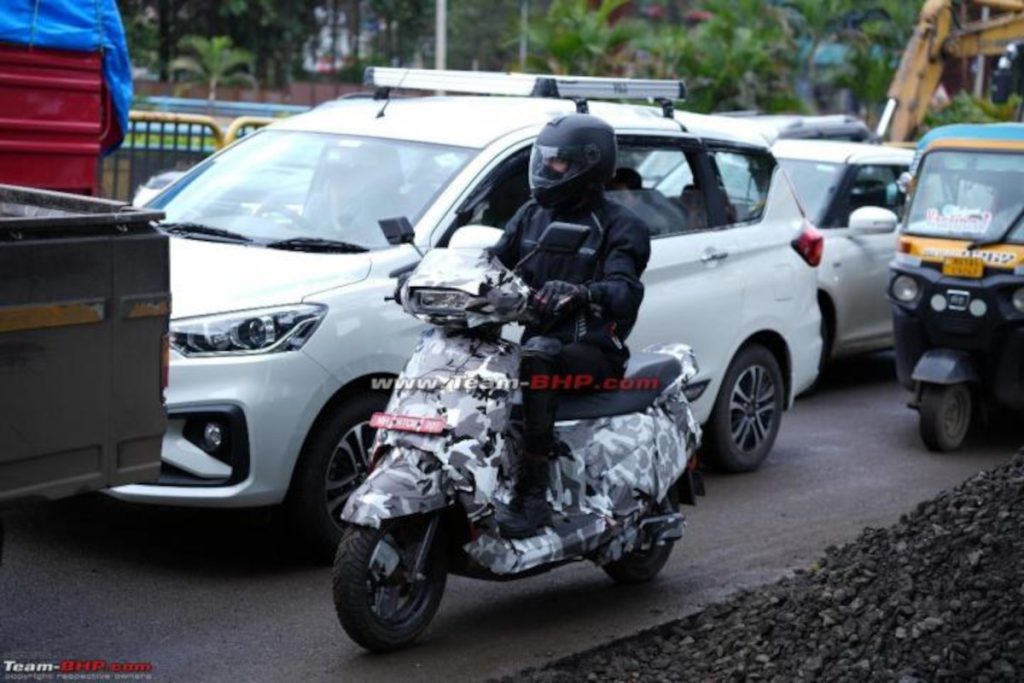
Pic Courtesy : TeamBHP
1.3. Bumps in the Road: Challenges and Infrastructure Insights
Despite the overwhelming enthusiasm, the path to widespread electric two-wheeler adoption in India is not without its challenges. The higher initial cost of electric scooters compared to their traditional petrol counterparts remains a significant barrier for many Indian consumers.1 While the long-term running costs are lower, the upfront investment can deter potential buyers.
A notable hurdle is the limited charging infrastructure, particularly outside major metropolitan areas.8 This scarcity can make finding convenient charging points a daunting task for riders, especially during longer trips or daily commutes. However, a positive trend indicates that the expanding network of charging stations in major cities is gradually alleviating these infrastructure concerns.4 Another emerging challenge involves maintenance and repair services. Given that electric scooters are relatively new to the Indian market, locating appropriate spare parts and reliable repair services can prove difficult, especially in smaller towns. Consumers frequently express apprehension regarding the availability of dependable service centers.8
The critical importance of after-sales service and charging network support cannot be overstated. Existing customer feedback for Kinetic Green’s current models highlights significant dissatisfaction, with reports of vehicles remaining at service centers for weeks without resolution and consistent complaints about actual battery range falling short of claims.9 This situation suggests that while product features and initial affordability attract buyers, a poor post-purchase experience can severely undermine brand trust and long-term adoption. The struggles faced by some market leaders, partly attributed to customer service challenges, underscore this point. Kinetic Green’s success with its new models, particularly the family scooter, will therefore depend not only on product quality but, more crucially, on a robust and responsive after-sales service and charging infrastructure. Addressing current service deficiencies head-on is paramount to building consumer confidence and ensuring widespread adoption, particularly as the company expands into Tier 2 and Tier 3 cities where service infrastructure is even more vital. A superior product paired with inadequate service risks market disappointment.
2. Kinetic Green’s Retro-Futuristic Revival: Unveiling the Next Big Thing
Kinetic Green is not merely launching new scooters; it is orchestrating a grand comeback, blending cherished nostalgia with cutting-edge design and technology. This strategic move represents a masterstroke in brand storytelling, aiming to capture the hearts and minds of Indian consumers.
2.1. A Blast from the Past: The Kinetic Honda DX Inspiration
Kinetic Green has unveiled ambitious plans to introduce three new electric scooters to the Indian market over the next 18 months. The first of these, a highly anticipated “family scooter,” is set to debut later this year, just in time for the 2025 festive season.6 What makes this launch particularly exciting is its design. The first model will feature a distinctive retro-inspired aesthetic, explicitly drawing its visual cues from the iconic Kinetic Honda DX.6 This design choice has already generated considerable buzz during public road testing.
The original Kinetic Honda DX, launched in 1984 as a pioneering joint venture, was a revolutionary vehicle in India.13 It stood out for its innovative gearless system and electric start, features that were uncommon at the time.13 Positioned as a premium offering, it quickly became a beloved hit among families, teenagers, and college students, even featuring prominently in advertisements and movies, cementing its status as a cultural icon.13 Its practical design, including a flat floorboard and low seat height, made it remarkably accessible and easy to handle for a wide range of riders.13 Recent design patents and spy shots of the upcoming electric scooter confirm a strong resemblance to its predecessor, complete with its characteristic squarish design, a small fly screen above the headlights, and a fin-style rear panel – an unmistakable homage to the original.11
The decision to infuse the new electric scooter with the spirit of the Kinetic Honda DX is more than a design choice; it is a powerful marketing strategy. The Kinetic Honda DX holds a deep emotional connection and strong brand recall among Indian consumers, particularly within families.13 This historical anchor provides Kinetic Green with a distinct advantage over many new EV startups that lack such a foundational legacy, forcing them to build brand recognition from the ground up. This retro-inspired design taps into a profound sense of familiarity and trust, potentially lowering the psychological barrier to adoption for consumers who might otherwise hesitate to embrace new electric vehicle brands. It can attract older generations who fondly remember the original, while its modern EV technology appeals to younger, environmentally conscious buyers. This dual appeal could provide Kinetic Green with a unique competitive edge in an increasingly crowded market, making the new electric vehicle feel like a natural evolution of a trusted name rather than a radical departure.
2.2. Italian Flair Meets Indian Roads: The Torino Design Partnership
Adding a touch of international sophistication, Kinetic Green has forged a significant partnership with the esteemed Italian design house, Torino Design, for its upcoming range of e-scooters.6 Established in March 2006 by former directors of the renowned Bertone, Torino Design is a highly reputable Italian car design studio based in Turin.17 Their expertise spans a wide array of mobility sectors, including cars, motorcycles, trucks, buses, trains, and even aerospace.18 The studio’s philosophy centers on “Soul and vision for future mobility,” seamlessly blending aesthetics, functionality, and innovation in their creations.18
This collaboration aims to “co-create a new range of ultra-futuristic scooters” that will feature “radical styling based on the Born Electric design philosophy”.10 This signals a bold new direction in mobility design and lifestyle, promising a disruptive elegance that is both trend-setting and youthful.10
This partnership represents a strategic move to significantly elevate Kinetic Green’s brand perception. Historically, Kinetic Green has been associated with utilitarian vehicles, and recent customer feedback has highlighted challenges in service experience.9 By collaborating with a prestigious Italian design firm like Torino Design, Kinetic Green is signaling a clear shift towards premium aesthetics and enhanced quality, moving beyond mere functionality. This directly addresses the “vehicle brand” preference identified among Indian consumers.7 The combination of “futuristic styling” with nostalgic retro elements creates a compelling narrative of bridging the past and the future, appealing to a broader, more discerning customer base. This can help the company command better pricing and compete more effectively with premium electric vehicle players, adding a layer of aspirational value to their offerings.
2.3. Powering Your Journey: Battery Options, Speed, and Family Appeal
The upcoming family electric scooter from Kinetic Green promises a versatile and practical riding experience tailored for the Indian market. It is expected to offer a range of battery options, starting from 1.8 kWh and extending up to 3 kWh, providing flexibility for different user needs and budgets [User Query]. Powering this new generation of scooters will be a hub-mounted electric motor, capable of propelling the vehicle to a top speed of 80 km/h [User Query].
Beyond raw performance, the scooter will integrate a suite of modern features designed for a connected and seamless riding experience. This includes a vibrant TFT display, fast-charging capabilities, and advanced IoT integration co-developed with Jio Things.6 The engineering and detailing of the vehicle will adhere to a unique philosophy dubbed “Thoughtful Engineering,” which ensures a synergy of intelligent design, IoT-based connectivity, and various features focused on ultimate comfort, convenience, and safety.10 A crucial practical aspect for a family-oriented scooter, a large underseat storage compartment, has also been confirmed.12
The decision to offer a range of battery options, from 1.8 kWh to 3 kWh, allows Kinetic Green to strategically cater to different price points and range requirements within the family segment [User Query]. This directly addresses the challenge of higher initial costs associated with electric vehicles by providing more affordable entry points, while still offering premium options for consumers willing to invest more for extended range.1 This modular approach to battery capacity represents a smart market penetration strategy. It enables Kinetic Green to cast a wider net, appealing to budget-conscious buyers with smaller battery options and those seeking more range for longer commutes with larger packs. This flexibility can drive higher adoption rates across various income brackets and usage patterns within the family segment, maximizing their potential market reach.
3. The Electric Arena: Sizing Up the Competition
The Indian electric two-wheeler market is a dynamic arena, with established players and nimble startups fiercely competing for market leadership. Kinetic Green’s new family scooter will enter this intensely competitive landscape, making a thorough understanding of its rivals essential for strategic positioning.
3.1. The Heavyweights: Ola, TVS, Bajaj, Ather – Who is Leading the Charge?
The battle for supremacy in the Indian electric two-wheeler market is a fascinating spectacle, with market leadership shifting among key players. As of June 2025 sales, TVS Motor Company has emerged as a dominant force, selling 25,274 electric scooters and capturing a significant 24.01% market share.2 Close on its heels is Bajaj Auto, which recorded 23,004 units sold, securing a 21.85% share.2 Ola Electric, while still a major player with 20,189 units sold, now holds 19.18% of the market.2
Looking at April 2025 sales, legacy OEMs, including TVS, Bajaj Auto, Hero MotoCorp, Greaves Electric, and Kinetic Green, collectively commanded a substantial 55% market share.3 Individually, TVS held 22%, Bajaj Auto 21%, and Ather Energy 14%.3 Ola Electric, with 19,709 units, also remained a top contender.3
Ola Electric, once the undisputed market leader, experienced a steep 45.23% year-on-year drop in sales in June 2025, with its market share plummeting from 46.07% to 19.18%.2 This decline is largely attributed to intensifying competition from traditional OEMs, challenges in customer service, quality concerns, and a moderated pace in Ola’s previously hyper-aggressive expansion strategy.2 Despite the drop, Ola remains in the top three, though now trailing TVS and Bajaj in volumes.2
TVS Motor Company, on the other hand, has shown remarkable resilience and growth, emerging as the top-selling OEM in June 2025 with an impressive 80.13% year-on-year growth.2 TVS has successfully leveraged its extensive dealership networks and established brand trust to gain ground.2 Its iQube model has been a top seller, even topping monthly sales charts for the first time in April 2025.3 Bajaj Auto has also witnessed a phenomenal rise, with a 154.16% increase in June 2025 sales, more than doubling its market share.2 The Bajaj Chetak continues to be a popular choice, appreciated for its classic appeal and robust build.8 Ather Energy has also enjoyed a stellar period, recording 133.46% growth in June 2025, a success credited to the launch of more affordable variants, expansion of its dealership networks, and a strategic focus on Tier-1 and metro markets.2
The Ather 450X remains a leading model, known for its advanced technology.8 Hero Electric posted a significant 148.78% growth in June 2025, maintaining its relevance in the affordable EV segment, particularly in rural and semi-urban areas.2 However, it is important to note that Hero Electric faces substantial challenges, including ongoing insolvency proceedings due to alleged misuse of FAME 2 subsidies and admitted claims exceeding ₹535 crore.22 It is also crucial to distinguish Hero Electric from Hero MotoCorp’s Vida, which operates as a separate entity entirely.25 Kinetic Green currently holds a modest 1% market share among legacy OEMs as of April 2025.3 The company has sold over 80,000 electric two-wheelers and built a network of 400 exclusive dealerships across the country.6
Ola Electric’s dramatic decline, despite its initial aggressive expansion, clearly demonstrates that market leadership in this segment is highly volatile. The stated reasons for its struggles—customer service challenges, quality concerns, and a reduced pace in expansion—highlight that while innovative products and aggressive pricing can initially capture attention, sustained success in the Indian electric vehicle market hinges on trust, consistent quality, and robust after-sales service.2 Conversely, legacy OEMs like TVS and Bajaj are gaining ground by effectively leveraging their wide networks and established brand trust.2
The severe insolvency issues faced by Hero Electric, another established player, due to alleged FAME 2 scheme misuse, further underscores how a breach of trust can severely impact even leading players.22 This competitive landscape provides a clear indication for Kinetic Green. As a legacy brand itself, it has a significant opportunity to capitalize on this trend by emphasizing reliability and service, especially given the existing negative feedback on its current models.9 The market is actively penalizing those who falter on service and quality, while rewarding those who deliver a consistent, trustworthy experience. This is a clear strategic imperative for Kinetic Green.
Table 3: Indian Electric Two-Wheeler Market Share by OEM (June 2025 vs. June 2024)
| Manufacturer | June ’25 Sales (Units) | June ’25 Market Share (%) | June ’24 Sales (Units) | June ’24 Market Share (%) | % Growth (YoY) | Market Share Change (pp) | Source |
| TVS | 25,274 | 24.01% | 14,031 | 17.54% | +80.13% | +6.47% | 2 |
| Bajaj Auto | 23,004 | 21.85% | 9,051 | 11.31% | +154.16% | +10.54% | 2 |
| Ola Electric | 20,189 | 19.18% | 36,859 | 46.07% | -45.23% | -26.89% | 2 |
| Ather Energy | 14,512 | 13.78% | 6,216 | 7.77% | +133.46% | +6.01% | 2 |
| Hero Electric | 7,665 | 7.28% | 3,081 | 3.85% | +148.78% | +3.43% | 2 |
| Greaves Electric Mobility | 4,199 | 3.99% | 2,716 | 3.39% | +54.60% | +0.60% | 2 |
| Kinetic Green (April 2025) | N/A | 1% | N/A | N/A | N/A | N/A | 3 |
3.2. Feature Face-Off: Range, Speed, Tech, and Price Point Showdown
Kinetic Green’s upcoming family scooter is stepping into a crowded ring, and its specifications will determine its competitive stance. The projected specifications include battery options from 1.8 kWh to 3 kWh, a hub-mounted electric motor, and a top speed of 80 km/h [User Query]. It will also boast a vibrant TFT display, fast-charging capabilities, and IoT integration co-developed with Jio Things, alongside a crucial large underseat storage compartment.6 Its retro design, inspired by the Kinetic Honda DX, is a unique selling proposition, further enhanced by the collaboration with Italian design house Torino Design.6
Let us compare this with the leading contenders:
- Ola S1 Pro: This model offers a wide array of variants, with the top-tier S1 Pro+ 5.3 kWh delivering an impressive 320 km IDC range and a blistering 141 km/h top speed, priced around ₹1.88 Lakh.27 More accessible variants, such as the S1 Pro 3kWh, provide a 176 km range and 125 km/h top speed at approximately ₹1.29 Lakh.27 Its feature set includes a 7-inch touchscreen display, hypercharging capabilities, and various riding modes.8
- TVS iQube: The iQube also comes in multiple variants. The 2.2 kWh model offers a 94 km IDC range at ₹94,434, while the iQube ST 5.3 kWh extends this to a 212 km IDC range at ₹1.58 Lakh.29 All iQube models are powered by a 4.4 kW BLDC motor and feature Bluetooth connectivity, navigation assist, a generous 30L underseat storage, and fast charging.29
- Bajaj Chetak: Known for its classic appeal, the Chetak offers a range of 126-127 km and a top speed of 73 km/h.20 Its battery capacity hovers around 3-3.2 kWh, with prices spanning from ₹99,900 to ₹1.66 Lakh.20 Riders appreciate its robust metal body, 35L underseat storage, digital console, and auto hazard lights, often praising its retro stylish look and smooth, comfortable ride.20
- Ather 450X: This premium electric scooter provides a range of 126-161 km and a top speed of 90 km/h.33 Available with 2.9 kWh and 3.7 kWh battery capacities, its prices range from ₹1.49 Lakh to ₹1.79 Lakh.33 It boasts a 7-inch TFT touchscreen, fast charging, over-the-air (OTA) updates, and park assist. Some users have noted limited underseat storage and a firmer ride.33
- Vida V1 Pro (Hero MotoCorp): While the V1 Pro (featuring a 3.44 kWh battery, 143 km range, and 80 km/h top speed) has been discontinued, its V2 variant remains available. The V1 Pro was priced at approximately ₹1.16 Lakh.35 Its features included swappable batteries, cruise control, keyless ignition, and a 7-inch TFT screen.35
Kinetic Green’s announced top speed of 80 km/h and battery options up to 3 kWh position its family scooter squarely within the mid-performance segment [User Query]. This places it in direct competition with models like the Bajaj Chetak and the erstwhile Vida V1 Pro. It is important to note that it will trail the higher-spec Ola S1 Pro and Ather 450X in terms of raw speed and top-tier range. However, this positioning aligns well with the practical needs of the “family scooter” segment.
Kinetic Green is making a deliberate choice to not aim for the “fastest” or “longest range” crown, which is a sensible approach for a family-oriented offering. Instead, it targets the sweet spot of “usable performance” for urban and semi-urban commutes, which is precisely what this segment values most. The 80 km/h top speed is a key psychological threshold for many Indian riders, providing sufficient confidence for navigating city traffic and even short highway stretches. The range of battery options allows the company to manage price points effectively, making the scooter accessible while still offering upgrades for those desiring more range. This balanced approach can appeal to a broad base of practical consumers.
Table 2: Leading Electric Scooter Competitors: A Quick Comparison
| Manufacturer | Model | Battery Capacity (kWh) | Claimed Range (km) | Top Speed (km/h) | Price Range (₹ Lakh) | Key Features | Source |
| Kinetic Green (Upcoming) | Family Scooter | 1.8-3 | TBD | 80 | TBD | Retro design, TFT, IoT, large storage | 6 |
| Ola Electric | S1 Pro | 3-5.3 | 176-320 | 125-141 | 1.29-1.88 | 7″ touchscreen, hypercharging, riding modes | 27 |
| TVS Motor | iQube | 2.2-5.3 | 94-212 | 78 | 0.94-1.59 | Bluetooth, navigation, 30L storage, fast charging | 29 |
| Bajaj Auto | Chetak | 3-3.2 | 126-127 | 73 | 0.99-1.66 | Metal body, 35L storage, digital console, retro style | 20 |
| Ather Energy | 450X | 2.9-3.7 | 126-161 | 90 | 1.49-1.79 | 7″ TFT touchscreen, fast charging, OTA updates, park assist | 33 |
| Hero MotoCorp | Vida V1 Pro (discontinued) | 3.44 | 143 | 80 | 1.16 | Swappable batteries, cruise control, keyless ignition | 35 |
3.3. Kinetic Green’s Current Footprint and Future Positioning
Kinetic Green embarked on its electric vehicle journey in 2016 with a focus on electric three-wheelers, later expanding into the two-wheeler segment in 2022 and launching its popular E-Luna in 2024.6 The company’s current electric scooter lineup includes the E-Luna (priced at ₹69,990, with a top speed of 50 km/h and 110 km range), Flex (₹1,09,874, 72 km/h, 120 km range), Zing (₹67,990, 25 km/h, 70 km range), and Zulu (₹79,990, 60 km/h, 104 km range).9 Kinetic Green has also established a substantial network of 400 exclusive dealerships across the country for its electric two-wheelers.6
However, current customer reviews for models like the E-Luna, Zing, and Zulu highlight significant areas for improvement. Common complaints revolve around unsatisfactory service experiences, battery performance that often falls short of claimed ranges, and concerns about overall reliability and comfort, particularly on challenging Indian roads.9 For example, one Kinetic Green E-Luna owner reported a “very serious problem of Service” with their vehicle stuck at a service center for weeks, receiving no satisfactory response.9 A Zing owner also detailed unresolved battery performance issues stretching over months.9
Kinetic Green possesses a double-edged sword: its legacy as a brand with established manufacturing and dealership networks provides an inherent advantage over pure startups in terms of infrastructure and initial consumer recognition.6 This foundation could foster initial trust. However, the existing negative customer feedback, particularly concerning after-sales service and consistent product performance, represents a significant vulnerability.9 This situation aligns with broader market trends where poor service and quality issues can severely impact even leading players, as evidenced by Ola Electric’s recent decline and Hero Electric’s FAME 2 subsidy challenges.2
This means that while the retro design and the prestigious Torino Design partnership are excellent for attracting new customers, Kinetic Green faces a critical challenge in retaining them and building long-term brand trust. The company must urgently invest in a drastic improvement of its after-sales service, address inconsistencies in battery performance, and enhance overall product reliability. Failure to proactively tackle these existing issues would undermine even the most brilliant marketing and design strategies, potentially leading to a similar fate as Ola Electric’s recent struggles. This is a critical vulnerability that demands proactive and transparent solutions, transforming a potential liability into a competitive strength.
Table 4: Kinetic Green’s Current Electric Scooter Lineup & User Feedback Snapshot
| Model Name | Price (₹) | Claimed Top Speed (km/h) | Claimed Range (km) | Average User Rating (out of 5) | Key User Feedback (Likes/Dislikes) | Source |
| E-Luna | 69,990 | 50 | 110 | 3.0 | Dislikes: Very serious service problems, vehicle stuck at service center for weeks, poor response 9 | 9 |
| Flex | 109,874 | 72 | 120 | 3.5 | No detailed customer reviews available in snippets | 9 |
| Zing | 67,990 | 25 | 70 | 1.0 | Dislikes: Battery performance below claim (59km vs 100km), unresolved complaints, bad service/management, digital meter issues 9 | 9 |
| Zulu | 79,990 | 60 | 104 | 2.0 | Dislikes: Poor quality on bad roads (shaky), instability, fell multiple times, 10-inch tires, long charging (6h), low range (80km), money wasted 9 | 9 |
4. Rider’s Rhapsody: What Makes Hearts (and Wheels) Spin?
Beyond the technical specifications, the true measure of an electric scooter’s success in India lies in the rider’s experience. What genuinely resonates with the Indian consumer, and what vital lessons can Kinetic Green draw from its own past and the market’s current trajectory?
4.1. The Nostalgia Factor: Why Retro Resonates
The Kinetic Honda DX holds a special place in the hearts of many Indians; it was a beloved icon of its era.13 It earned its popularity through its ease of handling, revolutionary gearless system, electric start, and a surprisingly spacious front, making it a firm favorite with families and young riders alike.13 At the time of its launch, it truly was a groundbreaking vehicle.13
Kinetic Green’s new family scooter’s design, heavily inspired by the DX, aims to tap into this powerful emotional connection, appealing directly to riders who grew up with the brand and harbor fond memories.11 This blend of retro appeal with modern electric vehicle technology is positioned as a significant “storytelling moment” in India’s electric vehicle evolution, seamlessly weaving heritage with cutting-edge advancements.15 Furthermore, the classic low-slung frame and flat floorboard, characteristic of the original DX and likely incorporated into the new model, translate into a lower seat height. This is a considerable advantage for shorter riders, senior citizens, and women, significantly enhancing their confidence and comfort during daily commutes.15
While Indian consumers show a willingness to embrace new electric vehicle companies, there can be a natural hesitation towards entirely novel technologies or brands without a proven track record.7 By wrapping a modern electric vehicle in a familiar, beloved retro design like the Kinetic Honda DX, Kinetic Green creates a psychological bridge. This strategy can significantly reduce the perceived risk and novelty associated with electric vehicles for a broad segment of the Indian population. The nostalgia serves as an emotional “comfort blanket,” making the transition to an electric vehicle feel less daunting and more like an evolution of a trusted brand. This is a powerful marketing differentiator, particularly for the “family” segment that values reliability and familiarity. It allows Kinetic Green to stand out in a market increasingly populated by sleek, futuristic designs by offering something comforting and familiar, yet technologically advanced.
4.2. Practicality and Performance: Daily Commute Realities
Indian consumers consistently prioritize functional features that enhance their daily commute. They value and are willing to pay for attributes like higher speed and larger battery packs, indicating a clear demand for practical utility.7 A significant majority of riders prefer a range exceeding 80 km per charge, with many prepared to pay extra for a range of 100-120 km.7 Kinetic Green’s planned range of battery options (1.8 kWh to 3 kWh) and a top speed of 80 km/h align well with these preferences, striking a good balance for typical urban use [User Query].
Electric scooters are particularly favored for urban commutes due to their affordability, lightweight nature, and suitability for frequent stop-and-go traffic.1 Their straightforward design and lower maintenance costs appeal broadly to middle-class buyers.1 Practical functionalities, such as spacious underseat storage, are also highly valued in family scooters, a feature exemplified by the Ola S1 Air and confirmed for Kinetic Green’s upcoming model.8
While some consumers are indeed willing to pay for “premium functional features” like higher speed and larger batteries, the “family scooter” segment inherently emphasizes practicality and cost-effectiveness over cutting-edge performance.7 The 80 km/h top speed and 1.8-3 kWh battery options for Kinetic Green’s new offering suggest a strategic aim for “enough” speed for city commutes and “enough” range for daily family errands, rather than pursuing outright performance dominance. This approach is pragmatic. It balances consumer desire for decent performance with the affordability expected in a family scooter. This positions Kinetic Green as a sensible, reliable choice for the average Indian household, avoiding the trap of over-engineering for features that the core family segment might not fully utilize or pay a significant premium for. The confirmed large underseat storage further reinforces this practicality, making it a true utility vehicle for families.
4.3. The Service Saga: Learning from Current Kinetic Green Experiences
The true test of any vehicle, especially an electric one, extends far beyond the showroom. For Kinetic Green, current customer experiences with its existing lineup reveal a critical area needing immediate attention. Customers have reported significant dissatisfaction with the after-sales service. For instance, a Kinetic Green E-Luna owner described a “very serious problem of Service,” with their vehicle stuck at a service center for weeks, receiving no satisfactory response.9 Similarly, a Zing owner detailed unresolved battery performance issues that persisted for months.9
Beyond service, battery performance issues, where the actual range achieved falls short of company claims, are a recurring complaint for current models like the Zing.9 Reliability and comfort on challenging Indian roads have also drawn criticism for models such as the Zulu, with one reviewer lamenting it as “Very bad vehicle money wasted” due to instability and charging problems.9
These issues are not unique to Kinetic Green; they reflect a broader industry challenge. For competitors like the TVS iQube, while some reviews praise its smoothness and comfort, others highlight “very bad service and maintenance” and persistent battery or charging problems.36 Ola Electric’s significant market share decline is partly attributed to “customer service challenges” and “quality concerns,” underscoring the vital role of robust post-purchase support.2 In contrast, the Bajaj Chetak generally receives positive reviews for its comfort, braking, and decent range, with users appreciating its sturdy metal body and retro styling, suggesting a more favorable perception of its service and quality.20
The user query asks about “likes and dislikes” and “review.” While the new design and features of Kinetic Green’s upcoming scooter are undoubtedly exciting, the current customer feedback reveals a glaring weakness: after-sales service and consistent product performance. This aligns with the broader market trend where poor service and quality issues can severely impact even leading players, regardless of initial product appeal. This means that Kinetic Green’s success with its new, highly anticipated family scooter will be heavily dependent on its ability to drastically improve its service network and ensure consistent, reliable battery performance and overall product quality. The retro design and Italian flair will certainly capture attention, but exceptional service will be the deciding factor for purchases and recommendations. Ignoring these past issues would be a critical misstep, as a great product paired with a terrible service experience is a fast track to consumer disappointment and market rejection.
5. Charting the Course: Strategic Recommendations for Kinetic Green
Kinetic Green stands at a pivotal moment. With a compelling new product strategy that marries cherished nostalgia with cutting-edge design and practical performance, the company is poised to make a significant splash in India’s booming electric two-wheeler market. The path ahead requires not only brilliant product launches but also an unwavering commitment to customer satisfaction through exceptional service and a robust support ecosystem.
5.1. Marketing Mastery: Leveraging Heritage and Design Prowess
To truly capture the market, Kinetic Green can employ a multi-faceted marketing approach. First, the company should wholeheartedly embrace the “Kinetic Honda DX Reborn” narrative. Marketing campaigns ought to lean heavily into the nostalgia, evoking the emotional connection and reliability associated with the original DX. This positions the new scooter as a modern, eco-friendly evolution of a beloved classic. Using evocative phrases such as “The legend returns, electrified!” or “Your trusted ride, reimagined for tomorrow” can tap into a powerful emotional reservoir, resonating deeply with potential buyers.11
Second, it is crucial to prominently highlight the Italian design edge. Promoting the Torino Design partnership emphasizes the “Italian flair meets Indian roads” story, showcasing the blend of timeless aesthetics and futuristic styling.6 This collaboration elevates the brand’s perceived quality and design sophistication, appealing to aspirational buyers.
Third, messaging should precisely target the “Family” segment. Communication ought to focus on practicality, convenience, and safety features like large underseat storage, comfortable seating, and robust build.8 Positioning the new scooter as the ideal upgrade for families transitioning to electric, emphasizing ease of use and low running costs, will resonate strongly. Key SEO keywords to integrate include “Retro electric scooter India,” “Kinetic Green family EV,” “Kinetic Honda DX inspired,” “Torino Design e-scooter,” “best electric scooter for Indian families,” “affordable electric scooter India,” and “reliable EV scooter.”
The retro design and the Torino Design partnership are compelling product features. However, the deeper opportunity lies in translating these features into emotional benefits for the consumer. Nostalgia offers comfort and familiarity, while Italian design conveys aspiration and quality. Simply stating facts is insufficient; the marketing must connect with the consumer’s heart. This means articulating that the scooter feels like a trusted friend from the past, yet performs with modern efficiency and looks undeniably stylish. This emotional connection can drive purchase decisions more powerfully than technical specifications alone, creating a unique brand identity that resonates deeply within the target market.
5.2. Product Perfection: Fine-Tuning Offerings for the Indian Family
To ensure the new family scooter truly excels, meticulous attention to product details is essential. While offering battery options from 1.8 kWh to 3 kWh is a commendable start, it is paramount to ensure that the real-world range consistently meets or, ideally, exceeds consumer expectations.7 The company might consider a 4 kWh option if market feedback indicates strong demand for longer ranges within the family segment, as consumers have demonstrated a willingness to pay for increased range.7
Furthermore, prioritizing durability for diverse Indian roads is crucial. Past feedback on reliability and comfort on challenging road conditions must be addressed.9 Emphasizing robust suspension (the telescopic fork and dual shocks observed in testing are positive indicators) and a build quality suitable for varied Indian terrains, including potholes and uneven surfaces, will build confidence in the product’s longevity.11
Finally, seamless technology integration is vital. The TFT screen and Jio Things IoT integration must be intuitive, user-friendly, and genuinely enhance the rider’s experience, avoiding unnecessary complexity or glitches.6 A smooth technological experience can serve as a significant differentiator in a competitive market.
Current Kinetic Green models have faced criticism for their actual range falling short of claims.9 This directly impacts consumer trust and satisfaction, a critical factor in electric vehicle adoption. For the new family scooter, Kinetic Green must be meticulously accurate with its range claims, perhaps even slightly under-promising to ensure that real-world performance consistently surpasses expectations. Building this reputation for honesty and reliability in battery performance will be crucial for overcoming past negative perceptions and fostering long-term customer loyalty. This approach builds trust and generates positive word-of-mouth, which is invaluable in a rapidly growing market.
5.3. Building Bridges: Enhancing Service and Charging Ecosystems
Perhaps the most critical area for Kinetic Green’s success lies in revolutionizing its after-sales service. The company must invest heavily in comprehensive training for technicians, ensure robust spare parts availability, and drastically improve responsiveness across its existing 400-dealer network.6 Implementing clear service lead times and proactive communication with customers will be essential. The introduction of a dedicated “Kinetic Care” program, possibly with guaranteed resolution times and mobile service units, could be a transformative step.
While the new scooter will feature fast-charging options, the limited charging infrastructure outside major cities remains a significant challenge for widespread adoption.6 Kinetic Green should actively pursue strategic charging partnerships with existing networks, much like Hero Electric’s collaboration with Jio-bp.26 Establishing Kinetic Green-branded charging points in key urban and semi-urban areas, and exploring battery swapping solutions for convenience in high-density regions, could further alleviate range anxiety.
Finally, transparent communication is key. The company should acknowledge past service challenges and clearly communicate the concrete steps being taken to improve. This approach builds trust and demonstrates a genuine commitment to the customer, rather than attempting to gloss over past issues. A public commitment to service excellence can transform a historical weakness into a powerful marketing message.
The market is saturated with electric scooter products, yet service quality remains a significant pain point across the industry, as evidenced by Ola Electric’s decline and various customer reviews for TVS iQube.2 Kinetic Green’s existing service issues represent a major liability.9 By transforming service from a weakness into a strength, Kinetic Green can carve out a powerful competitive advantage. A superior service experience can become a primary reason for purchase, driving positive word-of-mouth and customer retention in a market where many competitors struggle. This requires a fundamental cultural shift within the organization, viewing service as an integral part of the product offering and a direct driver of brand loyalty, ultimately leading to sustainable growth.
6. The Electric Horizon: Kinetic Green’s Path Forward
Kinetic Green stands at a pivotal moment. With a compelling new product strategy that marries cherished nostalgia with cutting-edge design and practical performance, the company is poised to make a significant splash in India’s booming electric two-wheeler market. The upcoming family scooter, with its nod to the iconic Kinetic Honda DX and the sophisticated touch of Torino Design, offers a unique value proposition that can resonate deeply with Indian consumers.
The path ahead requires not only brilliant product launches but also an unwavering commitment to customer satisfaction through exceptional service and a robust support ecosystem. If Kinetic Green can successfully bridge the gap between its exciting new vision and consistent, reliable execution, particularly in addressing past service and performance concerns, it could very well write the next thrilling chapter in India’s electric mobility story. The road is clear, the charge is on!
Sources
- India Electric Scooter and Motorcycle Market Size and Share – Outlook Report, Forecast Trends and Growth Analysis (2025-2034), accessed on July 14, 2025, https://www.marketresearch.com/Expert-Market-Research-v4220/India-Electric-Scooter-Motorcycle-Size-41480019/
- June 2025: EV 2-Wheeler Market Leaders Revealed, accessed on July 14, 2025, https://electricvehicles.in/june-2025-ev-2-wheeler-market-leaders-revealed/
- Legacy OEMs outsell Top 20 electric 2W startups, command 55% market share in April, accessed on July 14, 2025, https://www.autocarpro.in/analysis-sales/legacy-oems-outsell-top-20-electric-2w-startups-command-55-market-share-in-april-126216
- India Electric Scooter Market Report 2025: Size, Share, Latest – openPR.com, accessed on July 14, 2025, https://www.openpr.com/news/4090469/india-electric-scooter-market-report-2025-size-share-latest
- Indian Electric Scooter & Motorcycles Market 2025 | MotorCyclesData, accessed on July 14, 2025, https://www.motorcyclesdata.com/2025/06/05/indian-electric-scooter-and-motorcycles-market/
- Kinetic’s big return story! Three new e-scooters by Kinetic Green, accessed on July 14, 2025, https://timesofindia.indiatimes.com/auto/electric-bikes/kinetics-big-return-story-three-new-e-scooters-by-kinetic-green/articleshow/122385012.cms
- Inside Indian consumers’ embrace of electric two-wheelers – McKinsey, accessed on July 14, 2025, https://www.mckinsey.com/industries/automotive-and-assembly/our-insights/inside-indian-consumers-embrace-of-electric-two-wheelers
- Best Electric Scooters in India [2025] – Top Models and Features – Bajaj Finserv, accessed on July 14, 2025, https://www.bajajfinserv.in/top-10-electric-scooters
- Kinetic Green Bikes Price in India – New Kinetic Green Models 2025 …, accessed on July 14, 2025, https://www.bikewale.com/kinetic-green-bikes/
- Kinetic Green To Launch Three New Electric Scooters In Next 18 Months – BW Auto World, accessed on July 14, 2025, https://bwautoworld.com/article/kinetic-greeto-launch-three-new-electric-scooters-in-next-18-months-563245
- Is The Kinetic Honda DX Likely To Make A Comeback? – ACKO Drive, accessed on July 14, 2025, https://ackodrive.com/news/is-the-kinetic-honda-dx-2-likely-to-make-a-comeback/
- Kinetic Honda DX Reborn? New Kinetic Electric Scooter Spied Testing – carandbike, accessed on July 14, 2025, https://www.carandbike.com/news/kinetic-honda-dx-reborn-new-kinetic-electric-scooter-spied-testing-3217673
- Story of Kinetic Honda: A Brand that made Iconic Scooters in India – Motopsychcle, accessed on July 14, 2025, https://motopsychcle.com/story-of-kinetic-honda-a-brand-that-made-iconic-scooters-in-india/
- Kinetic Honda – Wikipedia, accessed on July 14, 2025, https://en.wikipedia.org/wiki/Kinetic_Honda
- Kinetic Honda ZX Electric Scooter Patent Revealed | Retro Comeback as EV? – EVINDIA, accessed on July 14, 2025, https://evindia.online/news/kinetic-honda-zx-electric-comeback-new-patent-sparks-nostalgic-ev-bu
- EV maker Kinetic Green to expand business, launch three new e-scooters in next 18 months, accessed on July 14, 2025, https://economictimes.indiatimes.com/industry/renewables/ev-maker-kinetic-green-to-expand-business-launch-three-new-e-scooters-in-next-18-months/articleshow/122383973.cms?UTM_Source=Google_Newsstand&UTM_Campaign=RSS_Feed&UTM_Medium=Referral
- Torino Design – Wikipedia, accessed on July 14, 2025, https://en.wikipedia.org/wiki/Torino_Design
- Welcome to Torino Design, accessed on July 14, 2025, http://www.torino-design.com/
- Pininfarina: We Move Dreams, accessed on July 14, 2025, https://pininfarina.it/
- Bajaj Chetak Specifications, Features, Mileage, Weight, Tyre Size – BikeDekho, accessed on July 14, 2025, https://www.bikedekho.com/bajaj/chetak/specifications
- Top 5 Electric Scooter in India for Daily Commute – EKO Tejas, accessed on July 14, 2025, https://ekotejas.in/blog/top-5-electric-scooter-in-india/
- Hero Electric: Amid insolvency proceedings, ministry seeks to recover Rs167 crore subsidy, accessed on July 14, 2025, https://www.livemint.com/companies/hero-electric-heavy-industries-ministry-rs167-crore-fame-2-subsidy-recovery-insolvency-proceedings-11748519601869.html
- Latest News & Videos, Photos about hero electric insolvency | The Economic Times – Page 1, accessed on July 14, 2025, https://economictimes.indiatimes.com/topic/hero-electric-insolvency
- Latest News Headlines, Videos and Photo Galleries on Hero Electric – Business Standard, accessed on July 14, 2025, https://www.business-standard.com/topic/hero-electric
- Vida Powered by Hero MotoCorp & Hero Electric: How Do They Differ! – BikeJunction, accessed on July 14, 2025, https://bikes.tractorjunction.com/en/news/vida-powered-by-hero-motocorp-hero-electric-how-do-they-differ
- Hero MotoCorp Vida vs Hero Electric: what’s the difference? – Autocar India, accessed on July 14, 2025, https://www.autocarindia.com/bike-news/hero-motocorp-vida-vs-hero-electric-whats-the-difference-425988
- Engineered to Thrill: Ola S1 Pro | Ola Electric, accessed on July 14, 2025, https://www.olaelectric.com/s1-pro
- OLA S1 Price, 2025 S1 Models, Images, Colours, Mileage & Reviews | BikeWale, accessed on July 14, 2025, https://www.bikewale.com/ola-bikes/s1/
- TVS iQube Specifications, Features, Mileage, Weight, Tyre Size – BikeDekho, accessed on July 14, 2025, https://www.bikedekho.com/tvs/iqube-electric/specifications
- TVS iQube Smart Electric Scooter: Price, Reviews, Features & Range – TVS Motors, accessed on July 14, 2025, https://www.tvsmotor.com/electric-scooters/tvs-iqube
- Bajaj Chetak PREMIUM Standard: Price, Range, Images, Features | EVINDIA, accessed on July 14, 2025, https://evindia.online/product/bajaj-ev-chetak-premium-standard
- Bajaj Chetak User Reviews, Ratings, Experts Opinion & Experience @ ZigWheels, accessed on July 14, 2025, https://www.zigwheels.com/user-reviews/bajaj/chetak
- Ather 450X Specifications, Features, Mileage, Weight, Tyre Size – BikeDekho, accessed on July 14, 2025, https://www.bikedekho.com/ather-energy/450x/specifications
- Ather 450X Price, Range, Mileage, Weight – BikeDekho, accessed on July 14, 2025, https://www.bikedekho.com/ather-energy/450x
- Vida V1 Pro Price – Range, Images, Colours | BikeWale, accessed on July 14, 2025, https://www.bikewale.com/vida-bikes/v1-pro/
- User Review of iQube by Shiva Kumar – Bad service and maintenance – BikeWale, accessed on July 14, 2025, https://www.bikewale.com/tvs-bikes/iqube/reviews/320087/
- Reviews of TVS iQube – BikeWale, accessed on July 14, 2025, https://www.bikewale.com/tvs-bikes/iqube/reviews/
Our Social Media Handles
- Instagram : LivingWithGravity
- Medium : Akash Dolas
- YouTube Channel : Gear and Shutter

